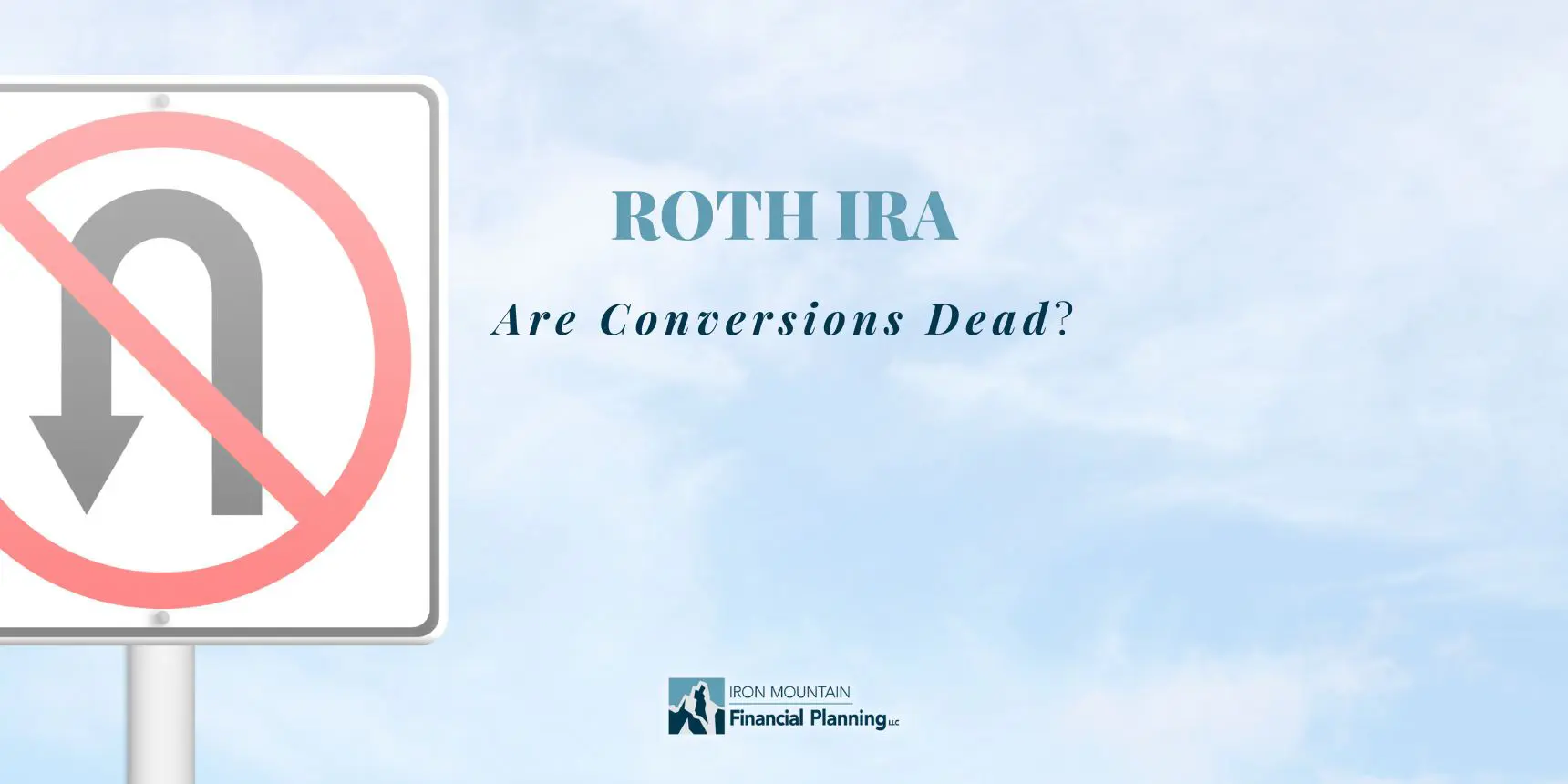The Tax Cuts and Jobs Act of 2017 eliminated the option to reverse (or recharacterize) ROTH IRA conversions. This doesn’t mean that ROTH IRA conversions are dead. The ability to reverse a specific ROTH IRA conversion was just one of the several potential benefits to the conversion process.
IRA Basics
The ROTH IRA was officially established as part of the Taxpayer Relief Act of 1997 as an alternative to the already existing Traditional IRA in an attempt to encourage younger investors. In the Traditional IRA, contributions were tax deductible and any withdrawals (contributions, growth and earnings) in retirement were subject to income tax. The new ROTH IRA mirrored this by allowing the contribution of after-tax dollars and any withdrawals (contributions, growth and earnings) would be tax free after the age of 59 ½.
The ROTH IRA also has other benefits such as the penalty-free withdrawal of contributions at any time and that investors don’t have to worry about Required Minimum Distributions (RMD’s) in their lifetime. Another difference is that while contribution (and catch-up) limits are identical between the two, the ROTH IRA has an income limit for where allowable contributions are phased out.
ROTH IRA Conversions
A fairly common tax planning strategy uses the flexibility of ROTH conversions to potentially minimize income taxes paid on retirement funds. This strategy moves retirement funds from either taxable (in the case of a back-door ROTH conversion) or tax-deferred accounts into a ROTH IRA where future growth and earnings can be distributed tax-free as long as certain rules are followed. This conversion requires paying income taxes today on any converted tax-deferred funds in exchange for the tax-free treatment of ROTH IRA distributions in the future.
This strategy is often reviewed for its potential benefits when projected RMD’s will push the investor into a higher tax bracket. A strategic ROTH conversion can limit the income tax owed on tax-deferred funds in specific situations. For example, say a married couple retires prior to the beginning of RMD’s and their expected taxable income (let’s use $60,000) that year puts them in the 12% income tax bracket. Due to the size of the tax-deferred accounts, projected RMD’s will push them into the 22% income tax bracket (beginning at $77,400 in 2018).
A ROTH conversion up to the limit of the current tax bracket means that they pay 12% income tax on that $17,400 now instead of potentially paying 22% income tax in the future. There are also other benefits, such as the future tax-free withdrawal of growth and earnings on the amount converted as well as no RMD’s required during the investor’s lifetime.
TCJA of 2017
Another potential benefit of ROTH conversions, prior to the TCJA of 2017, was the flexibility to reverse the conversion prior to the tax-filing deadline (plus extensions) for that year. The reversal of the conversion was usually only done if the investment of the converted funds had lost value.
In a typical ROTH conversion using the above scenario, the $17,400 needed to max out the current tax bracket would be converted from a tax-deferred account to a ROTH IRA in January. The investment would grow throughout the year and the yearend balance of the converted account might be $18,400. Completing the conversion at the beginning of the year was an advantage as only $17,400 was included as taxable income for the year. Whereas if the conversion happened at the end of the year, there would have been an additional $1,000 of growth that would have been included as taxable income.
Alternatively, if the investment lost value over the course of the year, the yearend balance of the converted account might be $15,500. Converting in January was not an advantage in this scenario and converting the lower amount in December would have resulted in less reportable income tax.
Finally, the ROTH IRA Recharacterization!
This is where a ROTH Recharacterization made sense. Now that it’s December and we have excellent hindsight for the year, the recharacterization option allowed the investor to reverse the original ROTH conversion from January – moving the $15,500 from a ROTH IRA back to a tax-deferred account. The investor could then complete a new ROTH conversion in December on the $15,500 in the tax-deferred account. Effectively reducing the amount of reportable income tax on the ROTH conversion by the amount of the difference.
While the TCJA of 2017 does eliminate the option to recharacterize a ROTH conversion, the elimination of that one feature doesn’t negate any of the other potential benefits of ROTH conversions. It simply means there’s no longer the ability to undo it if the investment declines in value over the year. ROTH conversions will continue to make sense for some investors, as always, depending on their individual situations.
If you would like help planning the ride of your life, navigating the winding road of investing and the tax code, I can help guide you thru our financial planning and investment management processes – it’s what I do for a living. Click here to schedule an introductory call.





